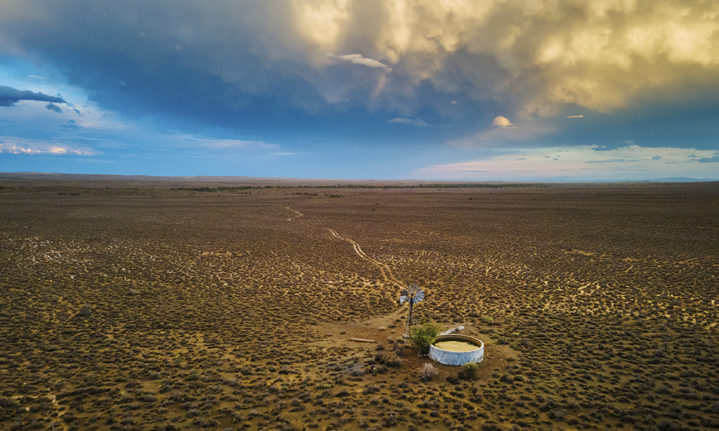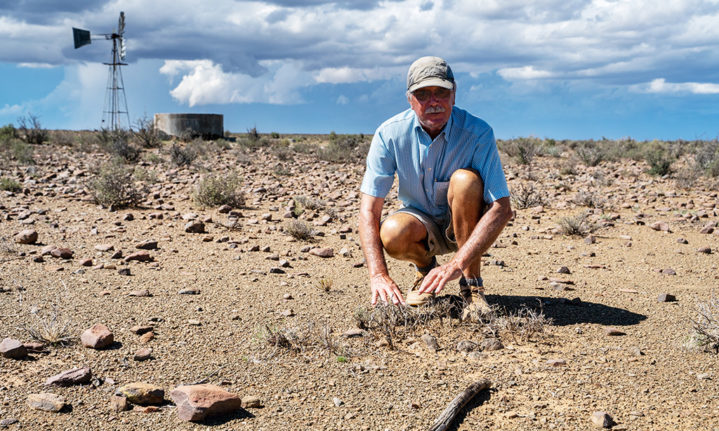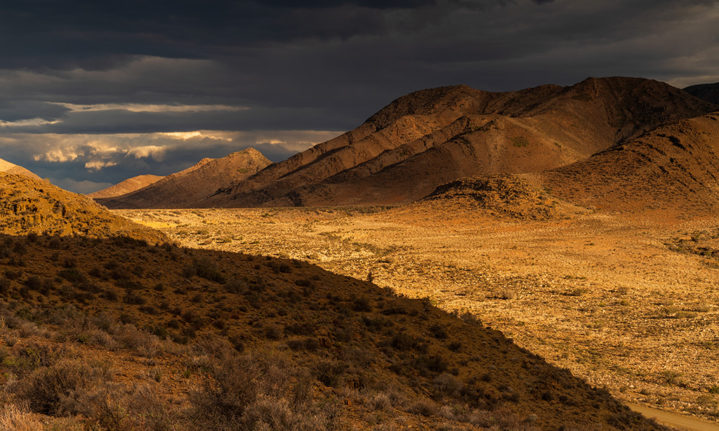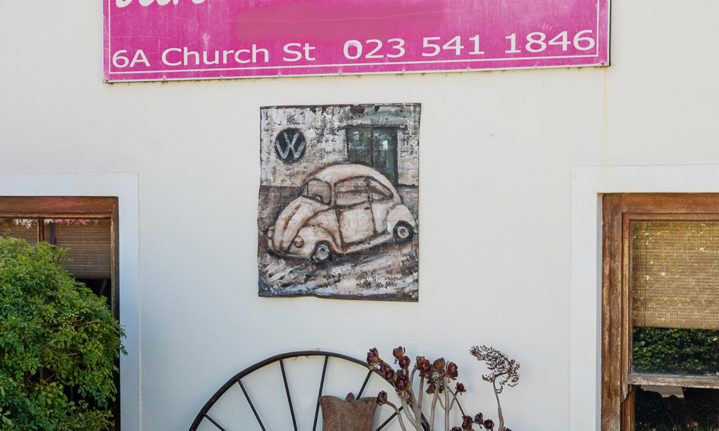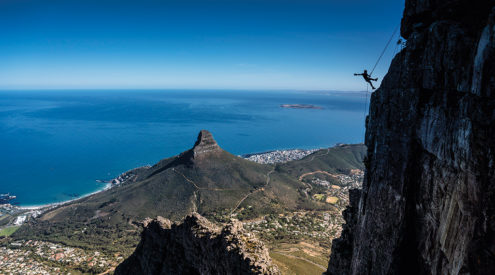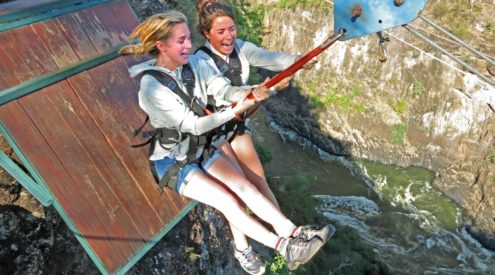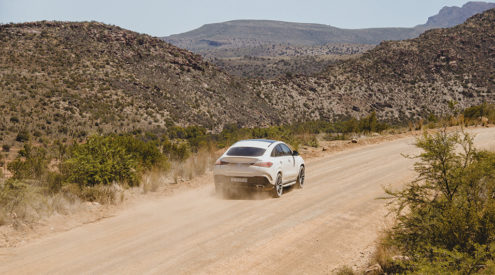Welcome to the arid expanse of the Karoo, where farmers haven’t had decent rain in years. But that was about to change…
Words & Photos Jay Caboz

Exploring off the beaten tracks of the Karoo can reveal magical unexpected vistas. ISO 50, 1/6th second at f/8
On the empty roads outside Prince Albert it’s dry and hot. In front of me is the stereotypical image you would expect from this arid region in the heart of the Western Cape’s Karoo: a field of weather-beaten scrub veld with your classic lone windmill squeaking about as it swings in a hot, gentle breeze.
It’s midday and we’ve spent hours driving from Cape Town to get here. We’re on the R407 and there’s a terribly angry tortoise watching me. In a way, I don’t blame it… in this heat it doesn’t have the advantage of being able to escape into an air-conditioned shell, like our car.
Fortunately for the tortoise – and the three other sweaty landscape photographers I am travelling with – reprieve is on its way.
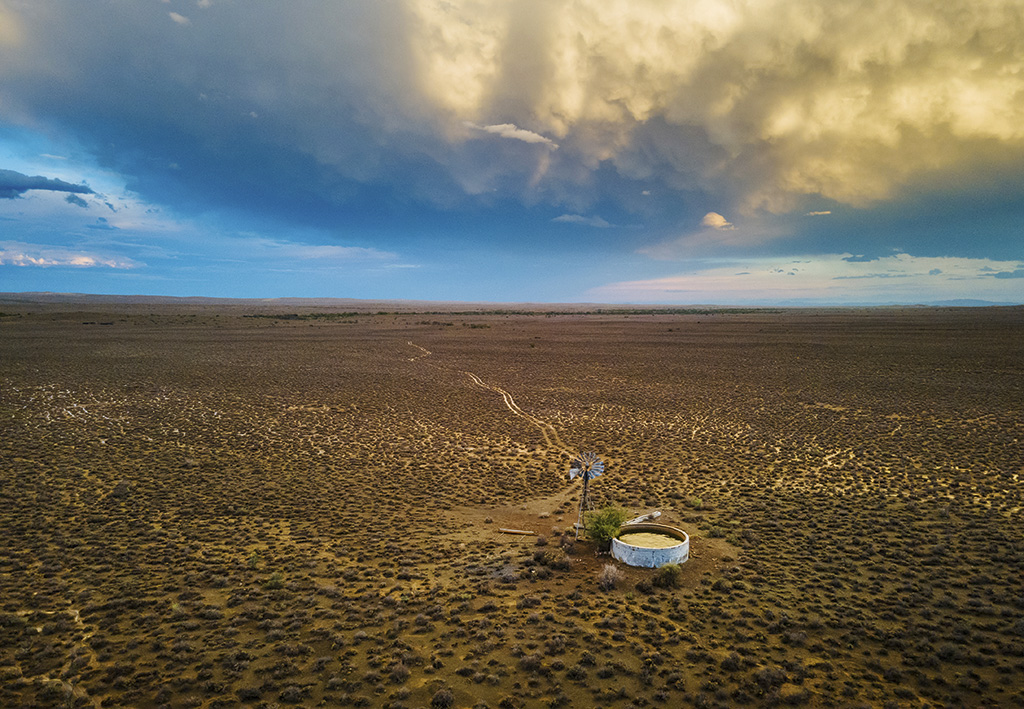
In the Karoo’s open expanse finding a focal point like a windmill will give your images that little bit extra. ISO 100, 1/100th second at f/2.8
Far in the distance, a massive set of high-level clouds is building, gradually turning a dark shade of black. The tortoise must have sensed the earthy smell of rain because he is making a beeline straight for it, much like us.
For just a few days a year, the dry Karoo transforms into an echo chamber for thunderstorms. These are the perfect conditions to grab unique images of the Karoo with rainbows, beams of light radiating past rocky outlooks, and rivers of rainwater that disappear in a matter of hours.
Veteran farmer Dirk Lamprecht has been praying for rain every day for the past six years. We came across his 10 000-hectare farm on the outskirts of Prince Albert by chance, looking to get closer to a large storm cell forming in the distance.

Carrying camera gear in the hot Karoo can be a chore, but with rainstorms on the way it’s worth it.
‘The last good year we had was 2014, in fact a normal year. From 2015 it just started getting drier and drier and the rain fell less and less.’
For Lamprecht, the rain hasn’t come early enough.
Having struggled to keep his farm running, he was forced to sell 2 500 angora goats because he could not afford to keep feeding them.
‘It will take at least five years [for my land] to recover enough to have [angora] again. What people don’t understand is that the Earth is what we really need to protect.’
His story, much like those of many farmers in the area, is a long hard one. Today he is lucky.
The bone-dry scrub we passed a mere few hours ago is overflowing with torrents of water. The relief on Lamprecht’s face is priceless.
Unfortunately, we can’t stick around and celebrate with a cool beer. The light is only getting better, the drama is building. But it won’t last long.
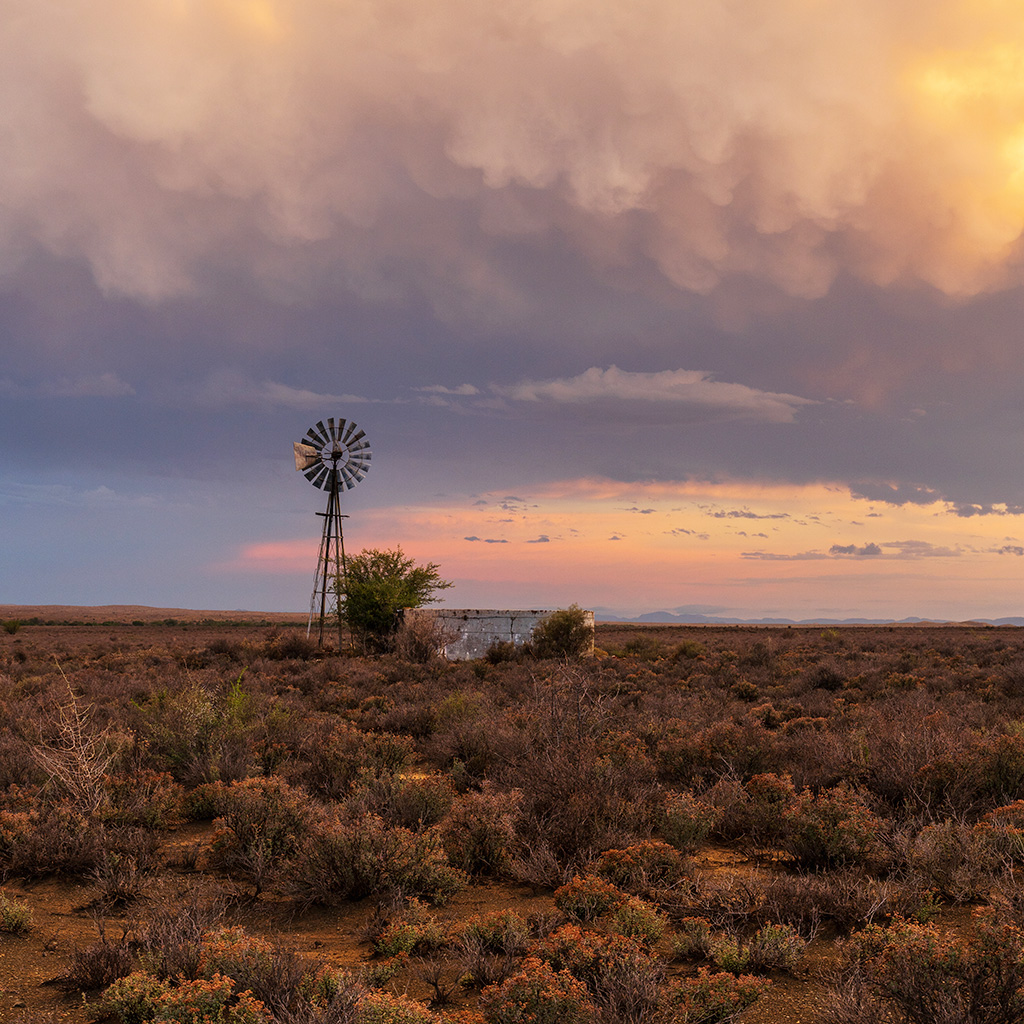
Waiting for golden hour is key to capturing the best light and colour. ISO 125, 1/40th second at f/9
Storm chasing in the Karoo is not easy, your biggest challenge is finding an interesting fore-ground. While it is vast, it takes a lot of petrol and a lot more luck to find something that will stand out.
Driving along the N12, we are met with a glorious sunset. Alongside us is a vibrant rainbow haloed by golden clouds and a picture-perfect little windmill.
This is the moment we have travelled over 500km for. We stop just opposite a windmill, jump out the vehicle and grab our tripods just in time for the dramatic lightshow.
As the sky darkens after a successful shoot, we make our way back to ‘base camp’ – a beautiful Cape Victorian home aptly named Die Letterhuis. The century-old building dates back to a time when letters were delivered by horse.
Original calligraphic works and castings of Belgian letter carvers Maud Bekaert and Kristoffel Boudens hang on the walls. It’s an ideal spot to recharge and appreciate the night sky with a Karoo lamb braai out on the stoep, while planning our next early morning sunrise shoot a couple of hundred metres away.

A storm cell leaves behind a river of rainwater. ISO 50, 1/25th second at f/22
Thanks to the rain, Karel de Haas, owner of Die Letterhuis, informs us that the dam behind their venue is magnificent and surprisingly full. We take full advantage of it during blue hour, the hour before the sun rises, when the land takes on a blue tinge and the refracted sunlight reflects off the clouds above.
Nature dishes up a fantastic sunrise as well as a landscape teeming with life. Ever in its unpredictable temperament, hundreds of ants have also risen early and decided that my legs would make for a decent breakfast.
After some photographs, and several ant bites later, we find ourselves having our first dessert of the day, a scrumptious carrot cake at the Lah-di-dah restaurant with a refreshing cup of iced coffee.
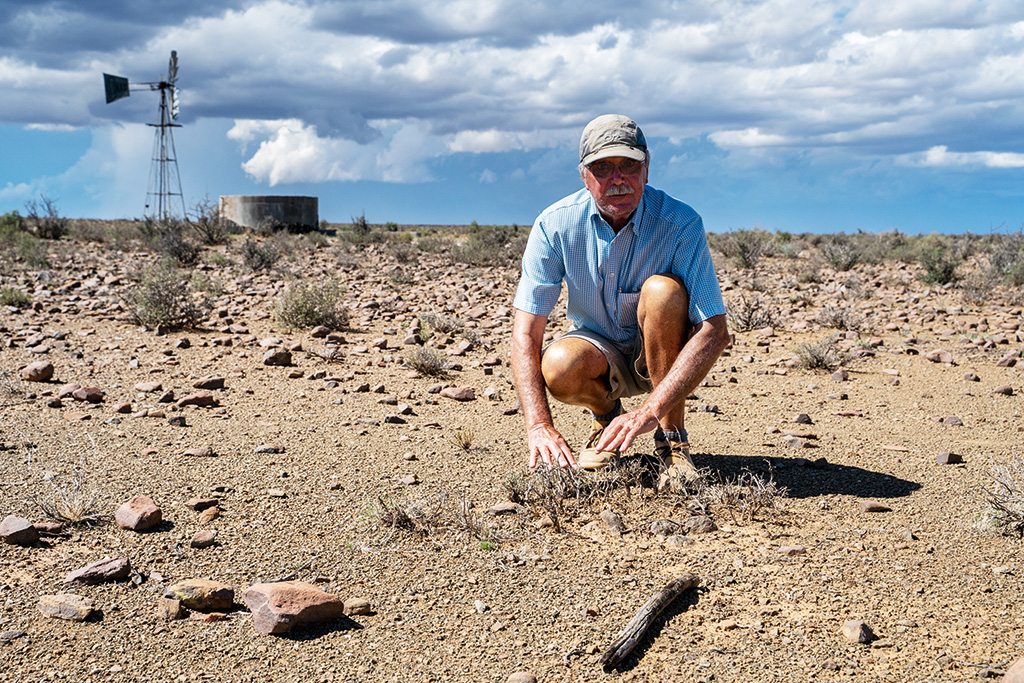
Veteran farmer Dirk Lamprecht has been praying for rain every day for the past six years.
Hoping to catch another storm, we head off west in the blistering 37°C heat. Nestled in the foothills of the Swartberg Mountains we discover the Weltevreden fig farm. Escaping the heat, we wait out the weather under the shade of a fig tree and decide it’s not too early for dessert. The fig farm dishes up a delicious R45 fig tart, and it turns out great food isn’t all that this farm is known for. Weltevreden also offers cosy self-catering guesthouses under a cool blanket of willows and blue gum trees.
Their small, private Fonteinskop house with its spacious, tranquil balcony is a few minutes’ drive from the main farm and offers endless views over the valley – which is where we unwind after a mad dash to grab all our camera gear before being blasted sideways by the rain and dirt from yet another storm.
With our gear safely tucked away, we take some much-needed time off to dance in the rain, shirts off, singing to the sky and laughing with our hearts and memory cards full of adventure.

Golden light touches the hills of the Karoo outside Prince Albert. ISO 50, 1/8th second at f/8.
The storm passes and it’s time to find our final location for sunset, and the last stop for our journey. We are tired and it has been a long, draining day on the road. At the top of a valley, we find a welcoming off-road vista with rolling mountains and a long dirt road to centre the composition. Just as it disappears behind the Swartberg mountains, beams of golden light stream forth.
A picture-perfect end to two long days spent chasing rains, rainbows and reflections in one of the driest areas of the country.
How to shoot storms
Photographing the ever-changing light is challenging. It demands a versatile photographer who needs to be on-the-ball when it comes to camera settings. I generally shoot at ISO 100 and try to balance the exposure between f/8 and f/16.
Shutter speeds can vary greatly depending on what you are photographing. If shooting handheld, aim for at least 1/500sec. Purchasing filters to darken your image, such as a 5-stop ND filter, will help to shoot longer shutter speeds (15 to 30 second exposures) with camera mounted on a tripod… more useful for capturing movement in pools of water and lightning.
The best advice I can give is to purchase a circular polariser which will help reduce the glare that comes off clouds and water reflections.
Trip Planner
Stay Here
Die Letterhuis on Aswater Farm, costs R1 000 per night for two. For additional guests, R450pp. Sleeps six in total, perfect for contemplative weekends with friends or family.
076 051 1017
letterhuis.co.za
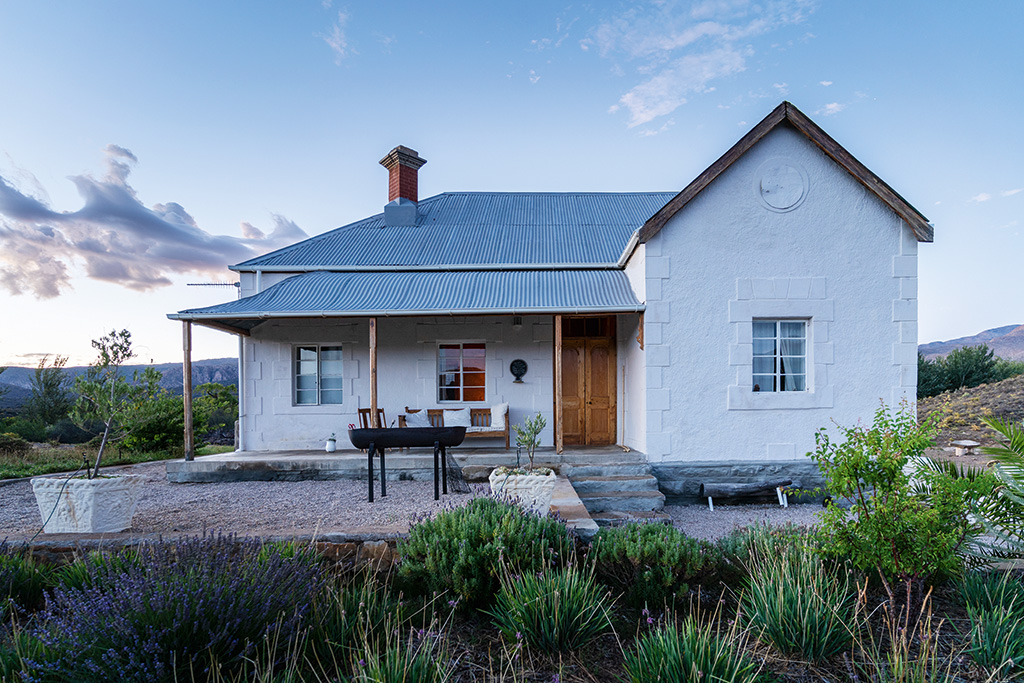
Die Letterhuis
Weltevrede Fig & Guest Farm, Fonteinskop, costs R800 per night for two in a quaint cottage, and R1 800 for the first four people in one of the three larger houses. All equipped with paraffin lamps, gas stove, gas fridge and gas geysers.
087 095 6229
figfarm.co.za/unit/fonteinskop
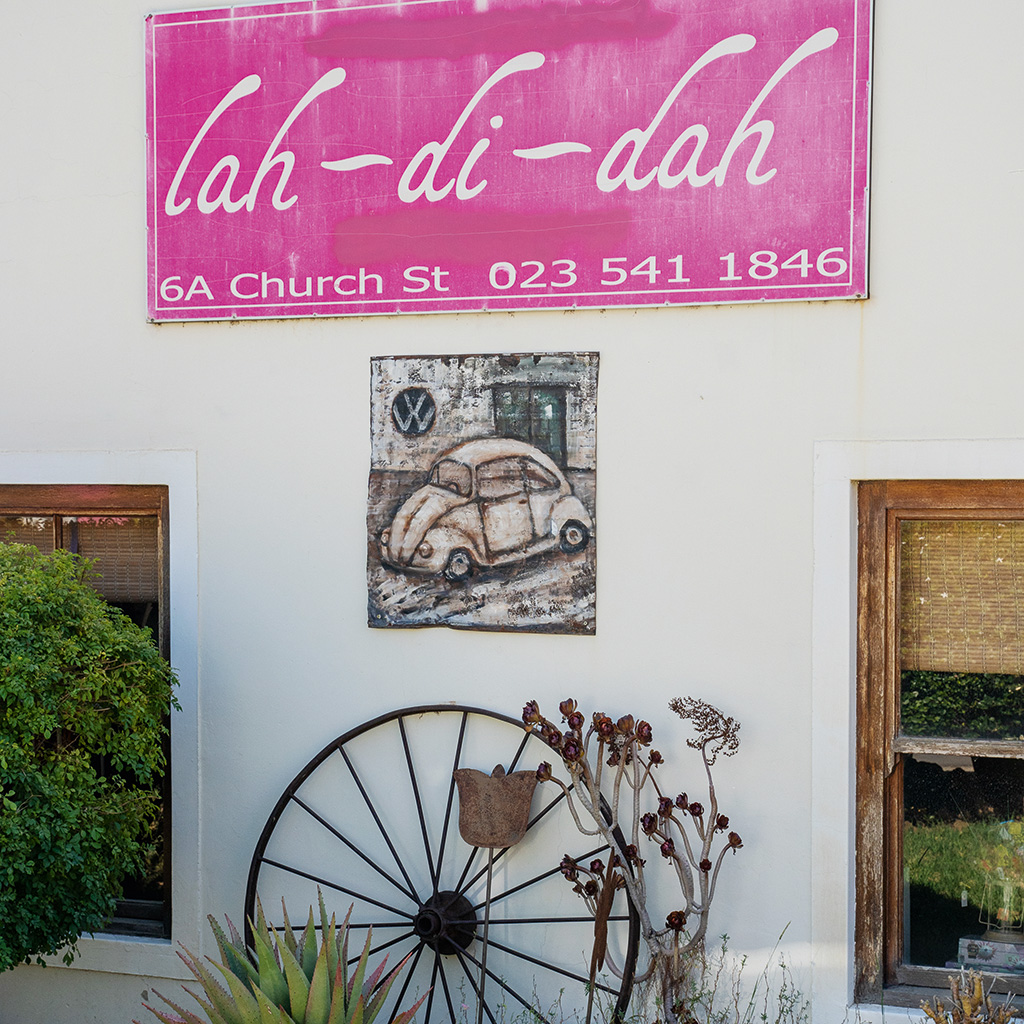
Eat Here
Visit Lah-di-dah restaurant in Prince Albert for delicious coffee and meals.
082 516 6146












